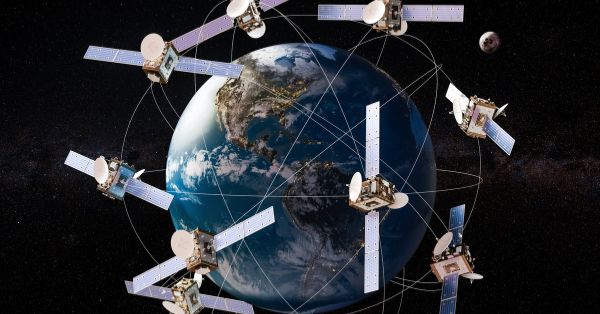The Internet of Things (IoT) describes the network of physical devices—from everyday household items to sophisticated industrial tools—embedded with sensors, software, and other technologies to connect and exchange data over the Internet. The advent of 5G networks has dramatically enhanced the potential and significance of IoT, promising to transform it into a universally connected and endlessly versatile ecosystem.
The integration of 5G with IoT is vital due to several key performance requirements. First, 5G networks offer massive connectivity, capable of supporting up to a million devices per square kilometer. This is crucial for IoT ecosystems, which often involve large-scale deployments of devices in areas such as smart cities or industrial complexes.
Second, low latency is another critical requirement for IoT in 5G networks. As many IoT applications—such as autonomous vehicles or real-time remote monitoring—depend on real-time data exchange, the ultra-low latency offered by 5G (as low as one millisecond) is a major advantage. Finally, energy efficiency is of paramount importance. Many IoT devices operate on battery power and are expected to function for long periods without requiring a recharge. 5G networks support IoT applications with low power consumption requirements, prolonging the battery life of these devices.
Beyond Connectivity | Exploring IoT Communication Technologies in 5G Networks
5G New Radio (NR) is the global standard for a unified, more capable 5G wireless air interface. It will play a significant role in meeting the diverse requirements of IoT applications in 5G networks. 5G NR offers superior connectivity, reduced latency, and increased energy efficiency, all of which are beneficial to IoT devices. Moreover, Narrowband IoT (NB-IoT) and LTE-M, both part of the 3GPP standard, will continue to play crucial roles in the 5G era. NB-IoT is a low power wide area technology designed to enable efficient communication and long battery life for mass-distributed devices. Similarly, LTE-M is a type of low-power wide area network designed for IoT applications that need cellular connectivity. Furthermore, the integration of satellite communication for IoT connectivity is gaining traction. Satellites can extend IoT connectivity to remote, rural, and underserved areas that terrestrial networks may not reach, providing truly global coverage.
Extending Horizons | The Crucial Role of Non-Terrestrial Networks in Enabling 5G IoT Coverage
Non-Terrestrial Networks (NTN), encompassing satellite and airborne platforms, play a vital role in expanding 5G IoT coverage. They extend IoT connectivity to remote and underserved areas, ensuring no device is out of reach. This is particularly important for global asset tracking and monitoring applications, where assets may be spread over vast geographical areas, including oceans and deserts. NTNs also ensure resilient IoT connectivity during disasters and emergencies. In scenarios where terrestrial network infrastructure is compromised—like during floods, earthquakes, or other catastrophic events—satellite or airborne networks can provide an alternative communication channel, ensuring the continuity of critical IoT services.
From Vision to Reality | Exploring the Exciting IoT Use Cases Enabled by 5G NTN
Non-Terrestrial Networks (NTN) coupled with 5G IoT capabilities offer unprecedented opportunities across various domains. Here are some of the promising use cases:
Remote Monitoring and Control of Industrial Facilities
With the power of 5G NTN, industries can remotely monitor and control their facilities, no matter how distant. For example, offshore oil and gas installations can benefit from real-time data exchange, facilitating continuous monitoring of operations, early detection of anomalies, and prompt troubleshooting. Similarly, remote mining sites can leverage this technology to enhance worker safety, operational efficiency, and environmental responsibility.
Asset Tracking and Management
The wide-area coverage provided by NTNs is a boon for asset tracking and management. Containers and cargo can be tracked across global shipping routes, providing accurate, real-time location updates and contributing to supply chain optimization. In vehicle fleet management, real-time tracking and data analysis can result in better routing, improved fuel efficiency, and enhanced safety.
Smart Agriculture and Precision Farming
The farming industry can benefit greatly from 5G NTN-powered IoT applications. Crop monitoring and irrigation control become increasingly efficient, as sensors can provide real-time data on soil moisture, weather conditions, and crop health. This information can then be used to adjust irrigation and fertilization schedules automatically, optimizing resource use. Additionally, livestock tracking and management are enhanced, allowing for the monitoring of animal health and location, reducing losses, and improving animal welfare.
Navigating the Landscape | Challenges and Opportunities in the Realm of 5G IoT and NTN
One of the main challenges in 5G IoT networks is scalability. As the IoT ecosystem grows, networks must handle connections from billions of devices, each transmitting data. Techniques for efficient device management and data handling at such a large scale are still being developed. Energy efficiency is another challenge. IoT devices often operate on battery power, so they need communication technologies that minimize energy consumption.
5G networks must find a balance between delivering high-performance connectivity and extending the battery life of IoT devices. Integrating terrestrial and satellite IoT systems presents both a challenge and an opportunity. The integration can extend IoT connectivity to remote areas and offer more robust and resilient networks. However, this requires overcoming technical challenges related to signal interference, latency, and handover mechanisms between terrestrial and satellite systems. Security and privacy concerns in 5G IoT are also paramount. With more devices connected, there are more potential entry points for cyberattacks. Ensuring robust security protocols and addressing privacy concerns will be crucial in gaining public trust and widespread adoption of 5G IoT.
Pioneering the Future | Emerging Trends and Technologies in 5G IoT and NTN
Integration of Edge Computing and Artificial Intelligence (AI) in IoT – One emerging trend is the integration of edge computing and AI in IoT applications. Edge computing allows data processing near the source, reducing latency, and AI can provide intelligent analysis and decision-making capabilities. This combination can greatly enhance IoT applications, from autonomous vehicles to smart factories.
Advanced IoT Communication Technologies – Advanced IoT communication technologies for NTN are also being developed. These technologies aim to improve the performance and efficiency of satellite communication, ensuring reliable IoT connectivity in remote and underserved areas.
Interoperability and Standardization – Interoperability and standardization efforts are crucial for seamless IoT connectivity. These efforts focus on developing common protocols and standards that enable devices and systems from different manufacturers to communicate effectively, facilitating the integration of terrestrial and satellite networks.
Unlocking Potential of 5G IoT and NTN
The integration of 5G, IoT, and NTN has transformative potential for various industries. From agriculture and logistics to environmental conservation and healthcare, these technologies can drive efficiency, innovation, and growth. Market forecasts anticipate significant growth in the 5G IoT and NTN sectors, indicating potential investment opportunities. The demand for reliable, high-speed connectivity and the increasing number of IoT devices are key factors driving this growth. In terms of future directions, continuous innovation is expected in 5G IoT and satellite communication. New technologies and solutions will continue to emerge, addressing current challenges and opening up new possibilities for connectivity and digital transformation. The future looks promising, with 5G IoT and NTN at the forefront of this exciting journey.



























































